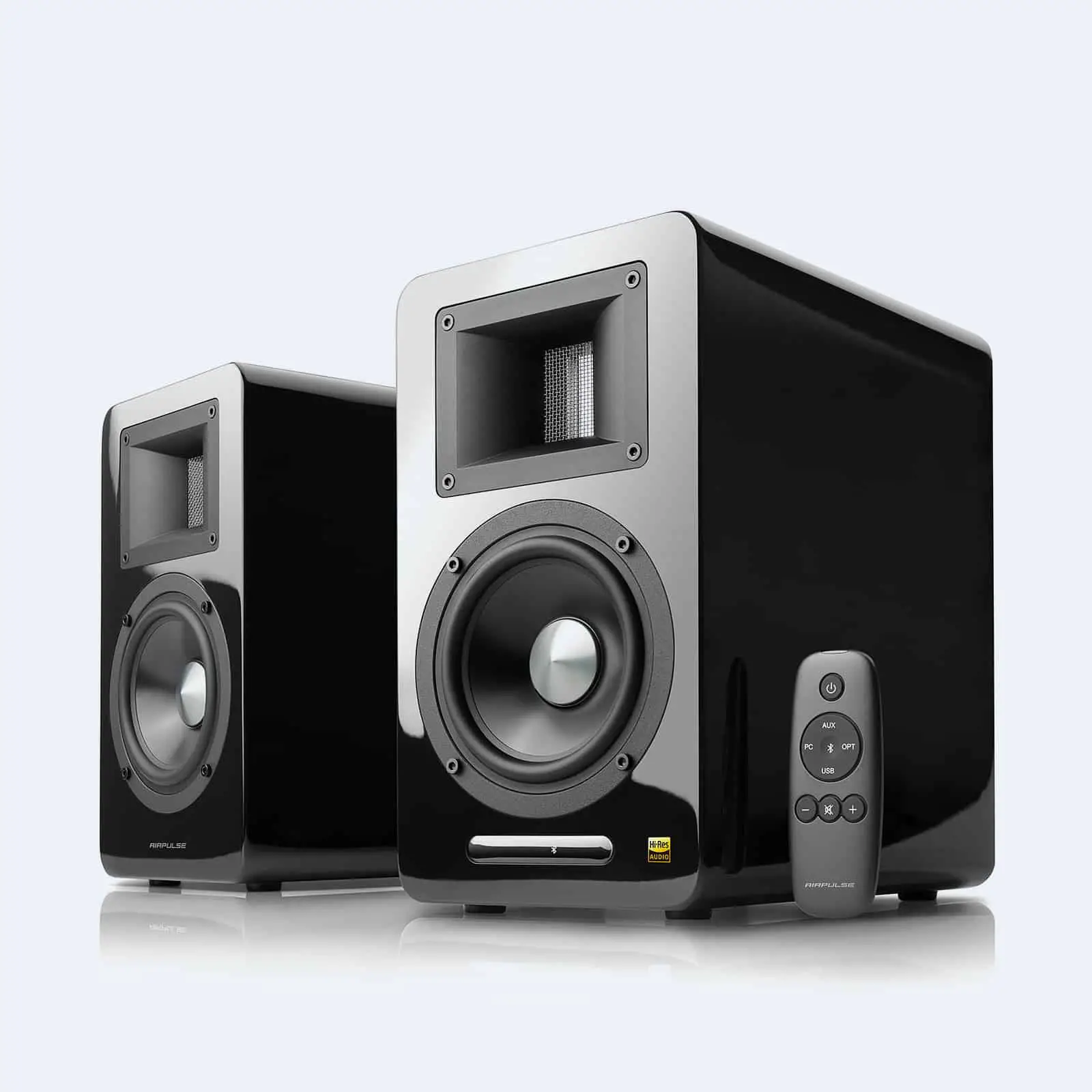Edifier Airpulse A100 Review
Edifier’s Airpulse series, launched A200 at the end of 2016, followed by the A300 at the end of 2017. At the beginning of 2018, the most compact Edifier Airpulse A100 was released.
Airpulse A200 is the first product of designer Phil Jones’ Airpulse brand under the Edifier brand. Its high-pitched aluminium horn speaker is reproduced from 2005 Phil Jones well-known speaker 7001. The small voice coil long-stroke aluminium bass 5.5-inch speaker It is also a very costly design.
The A300 is a larger size speaker introduced after the A200. The appearance is the same scale amplification of the A200. The tweeter is unchanged, and the woofer is increased from 5.5 inches to 6.5 inches. Of course, the digital crossover circuit and function have been fine-tuned. But it seems to be limited by the power and power of the power amplifier has not increased significantly with the increase of 6.5-inch speakers.
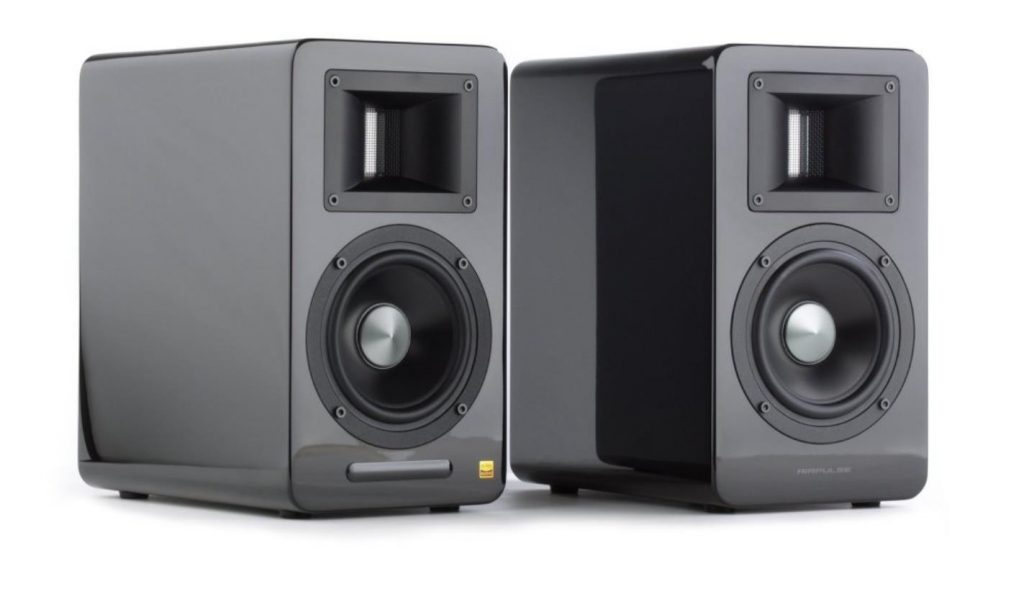
A100 is a smaller version, and it has many changes. The most important thing is that the size of the A100 tweeter has changed, so it is not the same as the A200 and A300. Of course, the mid-woofer has also become 5 inches, but the core structure is the same. The cabinet design is different from that of A200 and A300, and the volume is significantly reduced.
Appearance and Function
Airpulse A100 speaker design is different from A200 and A300. It uses a 5-inch mid-bass speaker. The four corners are rounded, and a combination of several factors to minimize the width of the speaker, making this speaker look narrower. The overall visual effect is more compact. The A100 cabinet uses an MDF density board with a thickness of 18mm. Due to the shrinking of the mid-bass unit, 18mm is quite sufficient, while the A200 uses a 25mm MDF.
Interface
The speakers still use the design of the primary and auxiliary boxes. The circuit and power are placed in the main box. Use 5 meters of the high-quality audio cable to connect between the main and auxiliary speakers. The input section supports two sets of RCA analogue inputs. The input sensitivity of PC is 550mV, and AUX is 450mV. A USB-B type interface allows the speaker to work in USB DAC mode and can be directly connected to a computer. It should be noted that the A100 also has digital optical input and a subwoofer output.
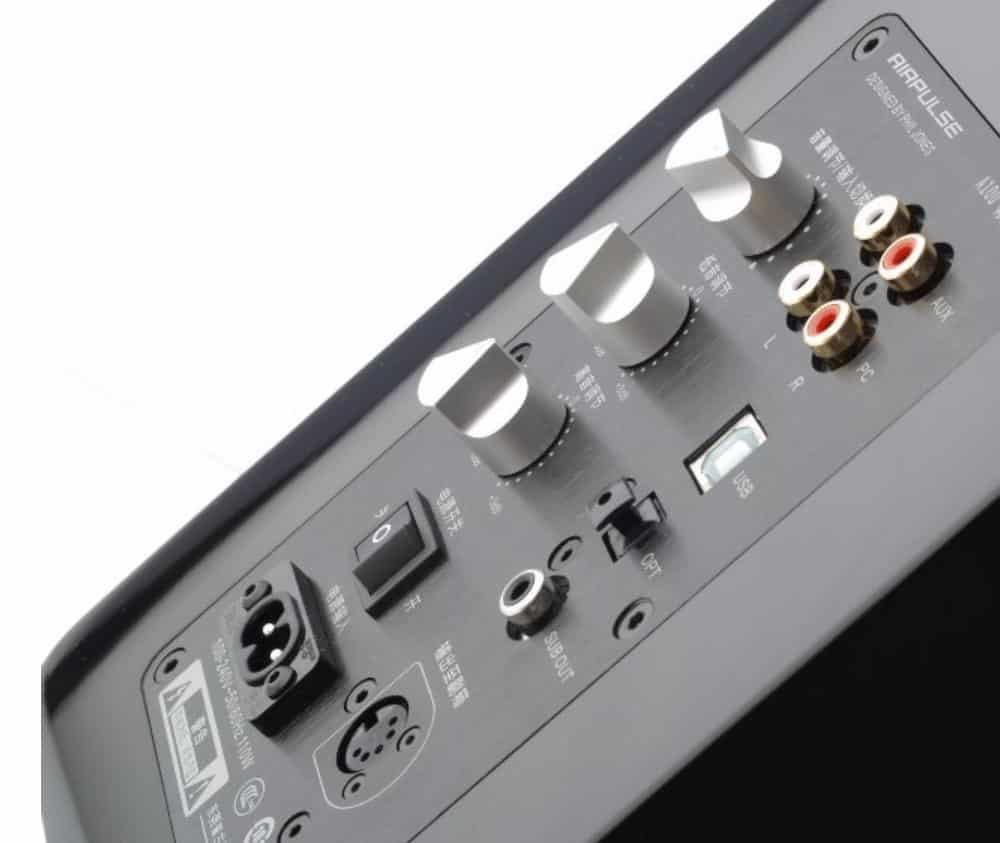
Driver
Although the structure is still a horn-loaded ribbon tweeter structure, the overall size can be seen to be smaller than that of A200 and A300. This horn-loaded ribbon tweeter is made from a thin aluminium diaphragm provides a high-sensitivity, extended frequency range and a well-defined resolution. The shape itself directs an optimized high-frequency directly to the listener minimizing room reflection and leading to superior imaging of the speaker.
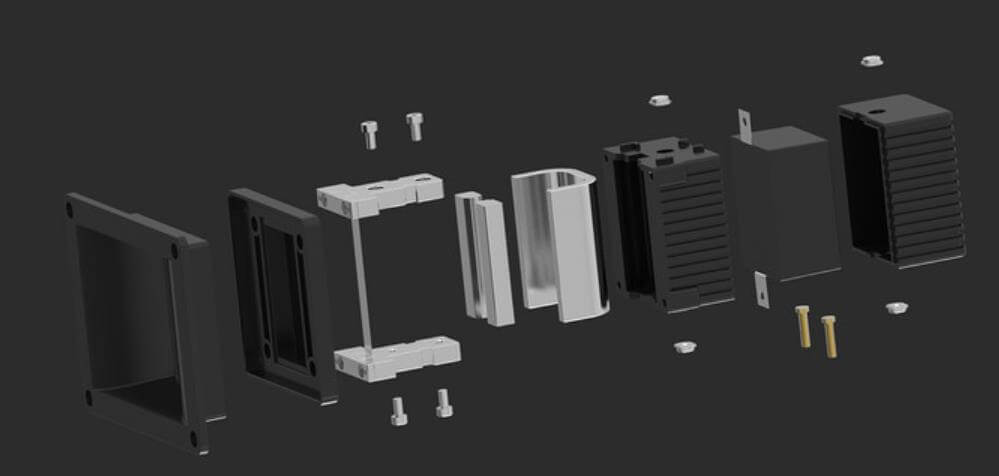
The mid-bass speaker still uses the short voice coil and long-stroke design. The advantage of this design is that the movement of the piston of the speaker keeps the stroke of the voice coil always in the magnetic circuit, ensuring the magnetic force is still uniform. But because the voice coil is short, the magnetic field needs to have greater strength, which increases the cost. The mid-bass speaker uses a fully cast aluminium basin frame, and the diaphragm is still an aluminium-magnesium alloy diaphragm. In general, the core technology has not changed, and the production cost of the speaker is still not low.
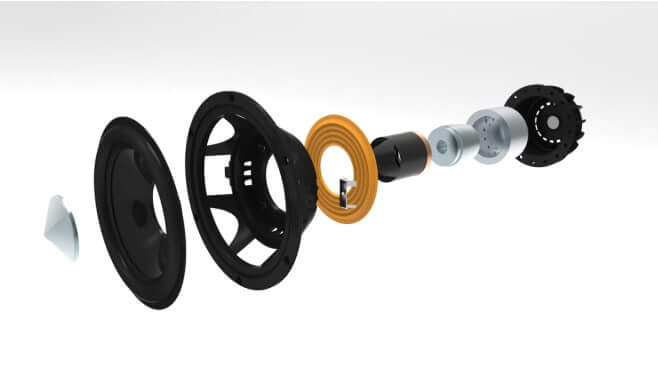
Internal Circuit Design
Edifier Airpulse A100 continues the design of digital crossover and digital power amplifier accumulated by Ramblers from R series and S series over the years. System control is handed over to MCU of ST’s STM32F series ARM core. Like the A300, the digital frequency division part was handed over to the XMOS xCore200 series chips, instead of using the previous TI TLV320 series DSP chips. This XMOS chip is also responsible for the work of the USB audio interface. That is, the speaker can work in the USB DAC mode.
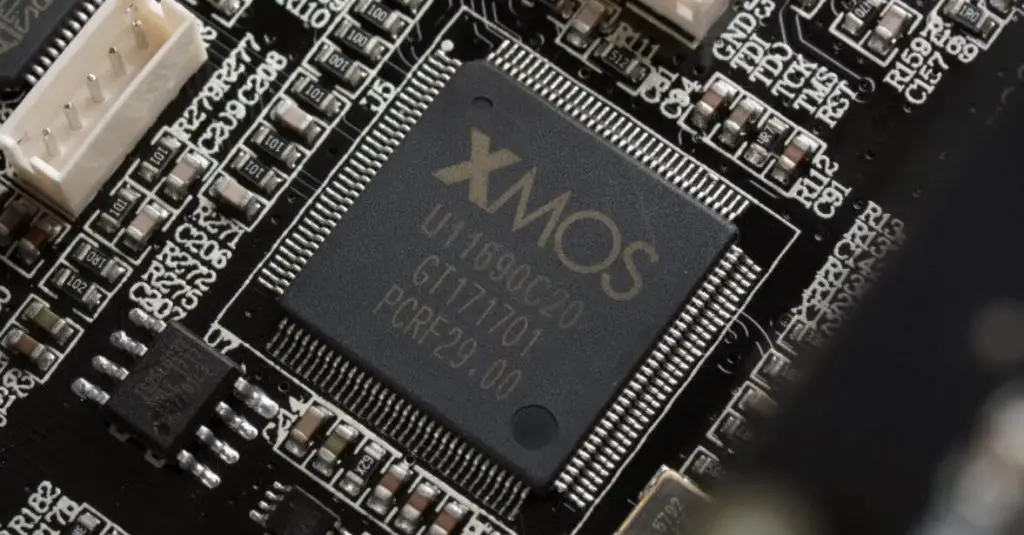
In addition to the more flexible and precise design, the benefits of digital frequency division mean that the frequency-divided signal can be amplified for different needs. That is a more significant advantage of digital crossover + digital power amplifier.
The A100 uses two TI’s TAS5754M Class-D amplifier chips to amplify the treble and mid-bass channels separately. One chip is used for the tweeter to provide 10Wx2 power. Another chip is used to provide 40Wx2 power in the mid-bass speaker.
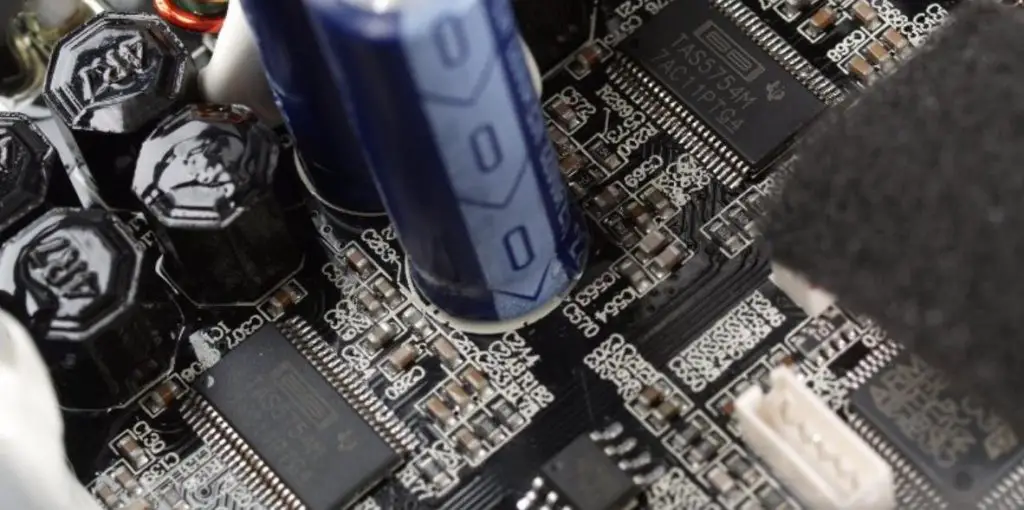
For the signal input part, Airpulse A100 uses PCM9211 chip as the digital signal input interface. A100 uses PCM1802 ADC chip for analogue signal input A/D conversion. The Bluetooth wireless connection part uses the CSR8645 chip, which supports the dual-device connection of apt-X audio decoding and Bluetooth 4.1. It should be noted that due to the limitations of the TAS5754M digital power amplifier chip, the A100 supports the highest sampling rate of 192kHz in the digital signal part, but does not support the 2x and 4x multiplier sampling rates of 44.1kHz.
Sound Quality
In the high-frequency part, the tweeter of A100 guarantees excellent quality, and the sense of hearing can be described as exquisite. However, the A100 does not have too much sound density but presents a refined sound in a somewhat “soft” way. In the mid-frequency part, the A100 has excellent resolution and reasonable control. For the low-frequency component, A100 has a particular treatment. Not only did it not make the sound more impactful, but it was somewhat restrained. The result is not much low frequency but very clean. Enhance with a subwoofer.
If you want to find fault, the volume of low-frequency speakers is limited, and the amount of low-frequency A100 is not significant. From this aspect, the Edifier Airpulse A100 is still a more monitoring oriented traditional speaker. But an external bass output port is reserved, and audiophiles who are not satisfied with the A100 bass can make.
Edifier Airpulse A100 Specs
- Tweeter: Horn Loaded Ribbon Tweeter
- Mid-Woofer: 5″ Aluminum Cone Underhung Design Neo. Power Mid-Woofer
- Amplifier System: Digital Amplifier With Xmos Processor
- Power Output: L/R(Treble):10W+10W, L/R(Woofer): 40W+40W
- Frequency Range: 52Hz-40KHz
- Signal-Noise Ratio: L/R:≥90dB(A)
- Input Mode: AUX, PC, USB, Optical, Bluetooth.
- Up to 192KHz Input Sample Rate on USB and Optical.
- Input Sensitivity: AUX- 450±50mV PC- 550±50mV, USB- 400±50mFFs, Optical- 400±50mFFs, Bluetooth- 500±50mFFs
- Sub Out: 800mV(max)
- Mains Voltage :100-240 V AC/50-60 Hz
- Cabinet Size (WxHxD): 160x283x255mm
- Net Weight: 11 Kg(24.2lbs)
- Gross Weight: 13.4 Kg(29.5lbs)
- Packing Size(HxWxD): 387x489x353mm
